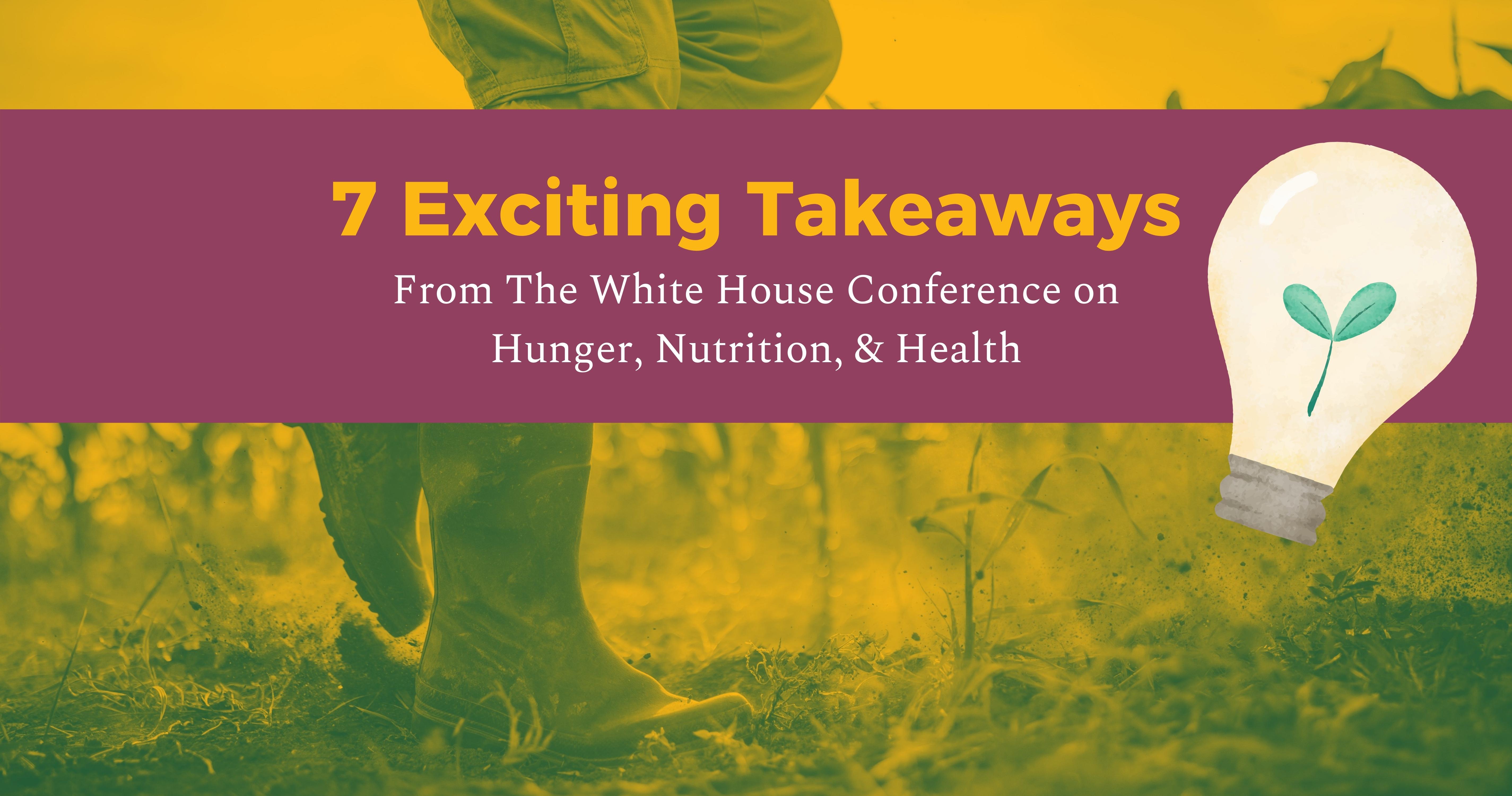
7 Exciting Takeaways From The White House Conference on Hunger, Nutrition, & Health
October 07, 2022 by 4P Foods
One in 10 American households do not have access to enough food. At the first White House Conference on Hunger, Nutrition, and Health in 50 years, the Biden-Harris Administration announced their plan to end food insecurity and increase healthy eating and physical activity by 2030.
This is a huge deal for food systems, farmers, and consumers. The size of the American food system is massive and decades past its due date to innovate. To have the highest public office promise real funding and empower food system leaders is critical in rebuilding a food system that heals our communities, saves our soil, and repairs the damage the current food infrastructure has created.
With an $8 billion budget, the Hunger, Nutrition, and Health plan directly addresses food access and affordability, nutrition and health, food education , physical activity for all, and food security and nutrition research. Here are the 7 points 4P Foods is excited about:
#1. Supporting Local and Regional Food Systems
Here at 4P Foods we are invested in rebuilding a regenerative regional food system in the Mid-Atlantic that supports local farmers and local communities. Establishing food hubs and dismantling barriers for small-to-medium sized farmers and BIPOC farmers were central topics of this conversation.
#2. Engaging the People Directly Affected to Inform the Solution
The conference brought together a diverse group of field experts sharing their experiences within the food system and communities and projects that have informed and inspired their work.
“If we are not engaging those who are directly impacted, it’s almost impossible for us to solve hunger, housing, or child care. Whatever you’re looking to solve for you have to start with those who are the experts in that experience,” explained Jimmieka Mills, Co-founder of Equitable Spaces.
#3. Implementing Equitable Policy Changes
The USDA promises to bring an equity lens to their research on the connection between diet and cancer through “the cancer moonshot” and other nutrition insecurity initiatives.
“We’re using precision nutrition to better understand the needs of underserved populations and we’re working to show how nutrition can be inclusive of all Americans. This includes demonstrating how culturally appropriate foods can be healthy,” said Dr. Chavonda Jacobs-Young, Chief Scientist at the USDA.
#4. School Cafeterias Sourcing Regional Food
Strengthening regional food systems and rural economies while providing students with healthier meals is a win, win, win! This plan also takes into account schools’ need for proper kitchen equipment to process and cook meals with whole ingredients rather than processed and packaged foods..
Beginning in early 2022, state school systems launched similar programs in response to COVID’s devastating impact on the food supply chain. In partnership with the Virginia Department of Education, 4P Foods supplies school systems throughout Virginia with food harvested from local farms through a Centralized Local Procurement Pilot Program funded by the U.S. Department of Agriculture Supply Chain Assistance grant.
#5. Expanding the Free School Meals Program
“Within the next 10 years, my plan would make at least nine million more children eligible for free school meals — a major first step for free meals for every single student,” announced President Biden.
Universal free school meals headlined the Nourishing Brighter Futures: Ensuring affordable food for all children and families discussion.
“I like to say healthy school meals for all is not a food security program, but a nutrition security program,” said Donna Martin, school nutrition director from Georgia. “This is our opportunity to teach kids how to eat healthy. And guess who they’re going to go home and teach? They’re going to teach their parents how to eat healthy.”
#6. Updating Government Programs to Work for the People
U.S. Secretary of Agriculture Tom Vilsack outlined a five pillar plan, including a Medicare program covering the cost of meals crafted to prevent or treat diet-related diseases.
To further reduce barriers to food access, an online grocery shopping pilot for SNAP will be expanded to address lack of transportation and ability to shop for food. President Biden called on Congress to expand incentives for purchasing fruits and vegetables through SNAP to make healthier foods more affordable.
#7. Funding and Expanding Food is Medicine Research
During the Food is Medicine discussion, speakers called for a network of public and private organizations to expand and fund Food is Medicine research. The logistical, cultural, and clinical aspects of Food is Medicine is in its early stages. 4P Foods is proud to partner with leaders in this field including Children’s National Hospital and the American Heart Association.
“Recognizing the important role of our community partners is critical in this work. Our community-based organizations that we work with are part of health care,” explained Dr. Kofi Essel, Community Pediatrician at Children's National Hospital in Washington, D.C.
Watch the conference and get involved here.